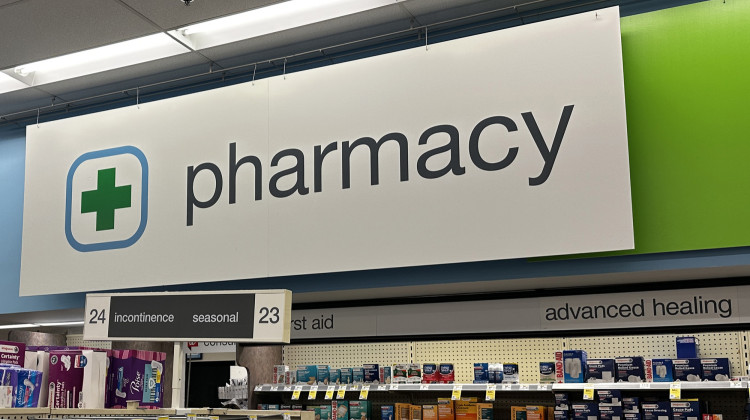
Since Jan. 1, Indiana has reported more than 140,000 new cases. And that was largely expected, considering the state’s low vaccination rates and how the omicron variant has moved through Europe and South Africa.
Justin Hicks/IPB NewsIndiana has set several new records for daily cases since the COVID-19 variant omicron hit the state. Those new cases are straining the state’s ability to test Hoosiers, meaning more positive cases are falling through the cracks.
Experts say despite that it’s still important to pay attention to case numbers.
Since Jan. 1, Indiana has reported more than 140,000 new cases. And that was largely expected, considering the state’s low vaccination rates and how the omicron variant has moved through Europe and South Africa.
But if more cases are falling through the cracks, is that still a valuable metric to watch? Micah Pollak, an associate professor of economics at Indiana University Northwest, said yes.
“If you think about, like a COVID wave as being like a wave in the ocean, I mean, paying attention to cases is when you’re standing on the beach looking out to sea and you see something happening out there,” Pollak said. “Hospitalizations are much more, kind of real and meaningful variable, but that’s something you get when you’re standing in the wave right as it’s coming up to your shoulders. Right? And the deaths are once you’re under the water.”
So even if the state isn’t capturing all the positive cases – because of asymptomatic cases, at-home tests which are not necessarily reported to IDOH, or just not having testing available – that warning sign is still important for the state’s health care system. Especially as it is contending with pandemic-record hospitalizations and potentially more on the horizon, even with a variant that is less likely to be severe.
“You just have to realize that it’s not exactly interpreted the same way it was a year ago. But it still has an important interpretation,” Pollak said. “It’s that first warning sign we get before we have to worry about hospitalizations and deaths.”
Join the conversation and sign up for the Indiana Two-Way. Text "Indiana" to 73224. Your comments and questions in response to our weekly text help us find the answers you need on COVID-19 and other statewide issues.
Pollak said using metrics like the positivity rate help fill in the gaps as testing shortages make it harder to capture the full scope of positive cases. Which – important to note – Indiana’s positivity rate is also setting record highs, alongside new cases.
The state’s seven-day positivity rate had not broken 25 percent before 2022. Since Jan. 1, it has only spent two days below that.
“You know, you’re going to get maybe different information out of seeing that wave off in the distance, but it’s still important to look for that wave off in the distance,” Pollak said.
Pollak said before omicron, for every one positive case, there were two or three cases that are missed. Now, he said that’s probably somewhere between five and 10 for every one positive case.
Contact Lauren at lchapman@wfyi.org or follow her on Twitter at @laurenechapman_.
 DONATE
DONATE






 Support WFYI. We can't do it without you.
Support WFYI. We can't do it without you.